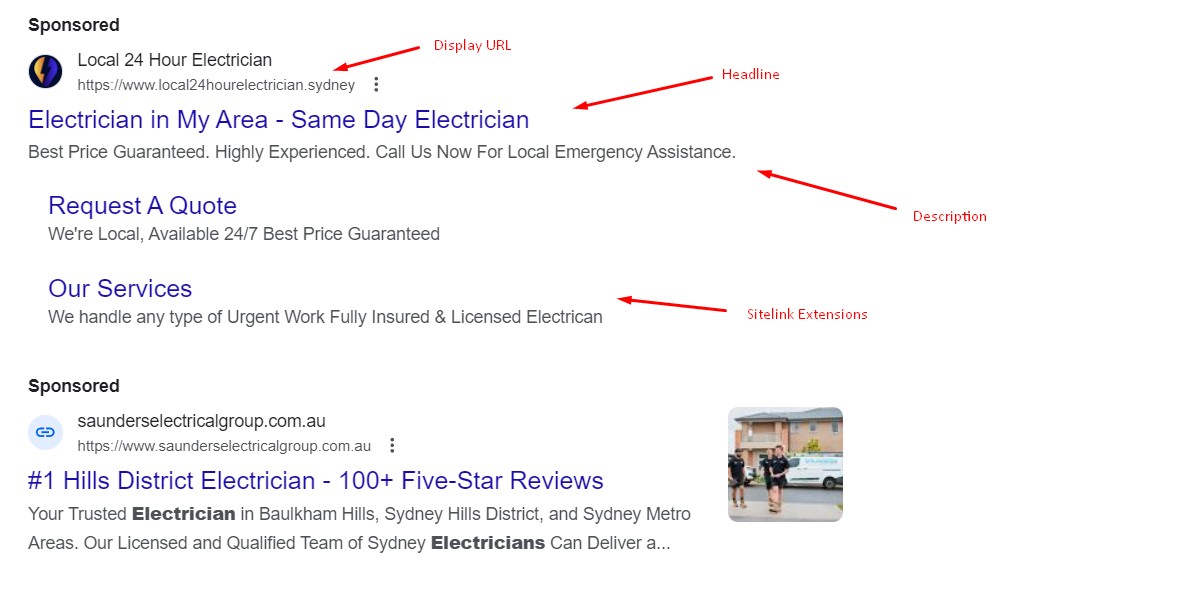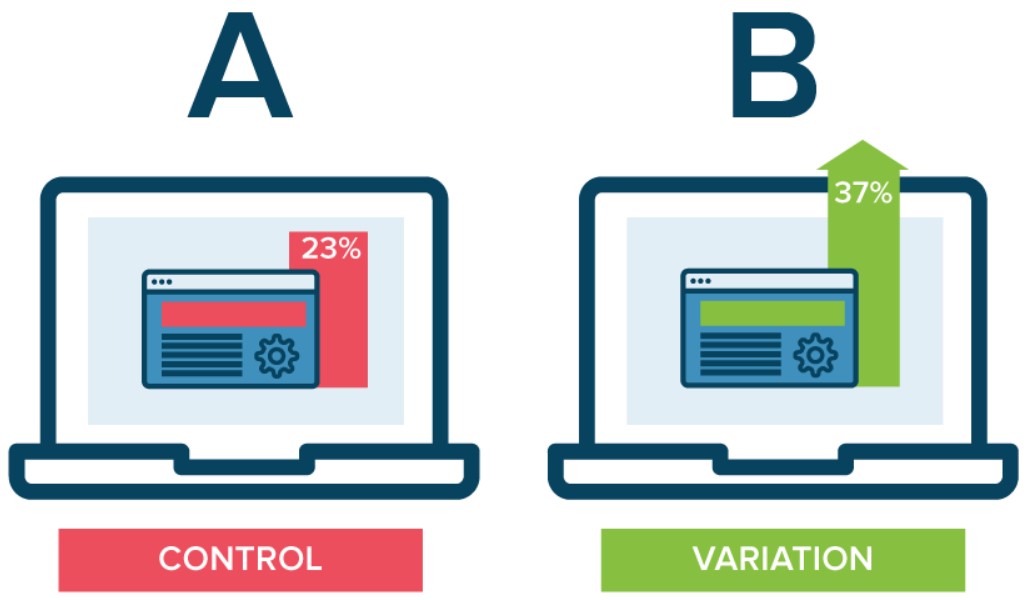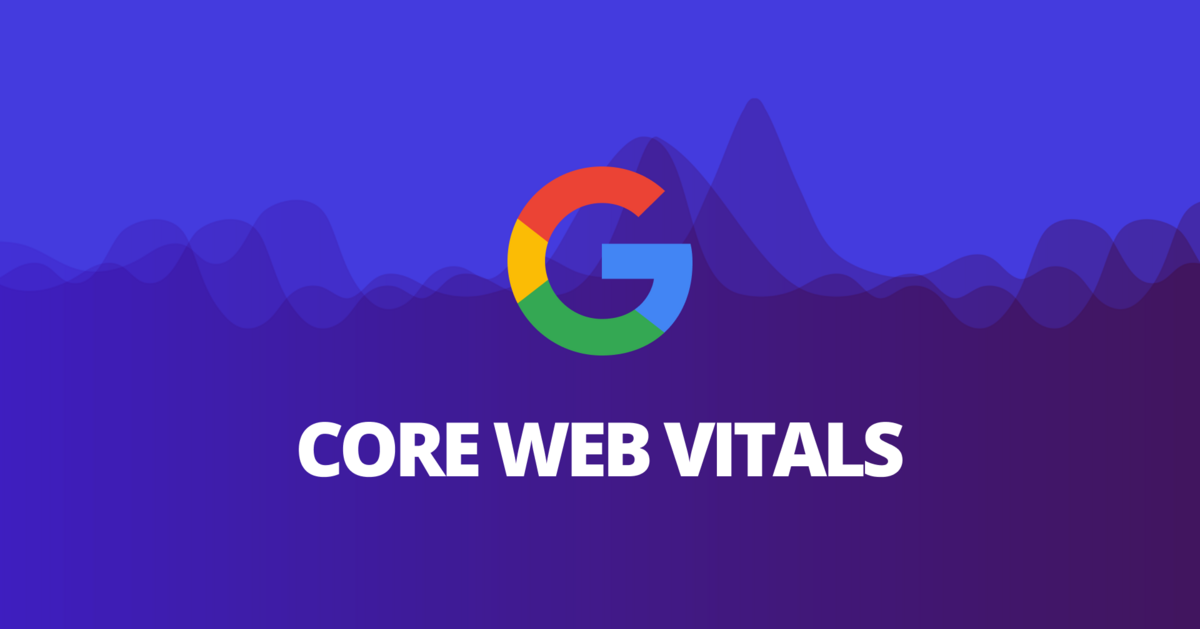Crafting quality ad copy and understand how to improve your click-through rate on Google Ads requires a blend of creativity and strategic thinking. Here’s a guide, on how to create ad content that connects with your target audience and enhances your campaign results.
What is a Google Ad and how is it structured?
A typical Google Ad shows up in search results as a text ad either at the top or bottom of the page with a Ad” label to mark it. These ads are made to resemble search results. Are distinguished by their placement and the “Ad” label. A standard Google Search Ad consists of three parts; the headline, the display URL and the description.
Headline: The headline is the part of a Google Ad that can contain up to 15 headlines and 4 descriptions for a single responsive search ad. It’s usually what catches a users eye first and is limited to 30 characters, per section and 90 for the description. The headline often includes keywords related to the users search query to attract attention and ensure relevance.
Display URL: Below the headline the display URL displays the web address of the landing page. This URL is often tailored to include keywords or phrases that enhance its appeal even if the actual landing page URL differs. For instance a display URL might show “www.example.com/Free Trial” even if the complete URL is lengthier or more intricate. Make sure you utalize this as it can improve your quality score and ad rank
Description: The description offers an overview of what the ad provides offering context and prompting action. Advertisers are allowed a maximum of 90 characters, per description line with the possibility of having two description lines in an ad. The description section serves as a platform to showcase the advantages selling points and compelling details that entice users to engage with the ad.
Additional items: Apart from these components Google Ads can incorporate extensions like sitelinks, callouts and structured snippets. These extensions offer information such as links, to specific pages business contact details or product/service features. Including these extensions can enhance the ads informativeness. Boost its visibility.
Google Ads are crafted to integrate into search results while providing advertisers with a way to connect with customers precisely when they are looking for relevant products or services. By optimizing these ads with pertinent content businesses can improve their chances of attracting clicks and driving conversions.

How to identify your target audiences to
Start by gaining an understanding of your target market. What are their pain points, needs and desires? Use this knowledge to craft ad copy that directly addresses their concerns. Adapt your language to match their style and preferences whether its formal, casual or somewhere in between.
Develop Detailed Buyer Personas. Build profiles of your customers considering demographics, interests, pain points and shopping behaviors. Tools such as Google Analytics and customer surveys can offer insights.
Harness Googles Audience Insights. Make use of Google Ads Audience Insights to identify the individuals engaging with your ads. This can unveil details and interests for more precise targeting.
Segment Your Ad Campaigns. Employ audience segmentation to customize ads for customer segments. For instance create ads for new visitors versus repeat customers addressing each groups specific needs, at different stages of the buying process.

How to develop your unique selling point and emphasize the advantages
When showcasing your product to customers demonstrate how it can address their needs or enhance their lives. For instance of stating “Our software features analytics ” you could say “Gain valuable insights, with our cutting edge analytics.”
Focusing in on the problem statements rather than the product allows you to cut through the noise and attract more eye-balls. Companies are always looking to solve specific business problems and by addressing pain points you are more likely to catch someone’s attention.
Apply the ” What?” when describing a feature continuously ask yourself “What does this mean for the customer?” until you pinpoint the core benefit that resonates with your target audience. For example when highlighting “24/7 customer support ” focus on the benefit of “Access assistance whenever you require it.”
Highlight Your Unique Selling Points (USPs).Showcase what makes your product or service unique. Whether its service, superior quality or exclusive functionalities ensure these distinctions are evident in your messaging.
Craft Headlines Packed with Benefits that create headlines that instantly communicate the advantage to users. For instance a headline like “Save 50% on Your First Purchase” is more compelling than stating “Discount Available.”
Use Language That Promotes Action
Encourage users to engage by employing compelling calls to action (CTAs). Phrases such, as “Begin Today ” “Activate Your Free Trial ” or “Explore Your Solution Now” can motivate users to take action.
Ensure that your call, to action (CTA) aligns with what the user wants and the action you want them to take.
Create a sense of urgency; Using phrases like “Limited Time Offer” or ” a Few Left” can urge users to act. However be cautious not to overdo it as this approach may lose its impact if used frequently in advertisements.
Utilize language; Words such as “Discover,” “Unlock,” “Transform,” and “Boost” can inspire users to take action. These terms imply results achievable by clicking on your ad.
Match CTA with Landing Page; It’s crucial that the action requested in your ad corresponds with the content and actions on your landing page. This alignment helps reduce bounce rates and enhance conversion rates.
Naturally integrate keywords; Incorporate keywords into your ad copy for visibility and relevance. Avoid stuffing keywords; instead ensure the text flows naturally while providing value. Googles AI is continuously improving its grasp of user intent so prioritizing high quality content is key.

Leverage Keyword Insertion Tools; Google Ads provides dynamic keyword insertion (DKI) which automatically updates your ad text, with triggered keywords.
Enhancing the relevance of your ads to match what searchers are looking for is crucial.
Optimize, for Specific User Intent by focusing on long tail keywords that’re less competitive and lead to conversion rates. For instance of shoes ” target phrases like “affordable running shoes for women.”
Avoid Overloading with Keywords. Ensure they blend naturally within your ad copy. Keyword stuffing can harm readability as impact your Quality Score and overall ad performance.
Harness the Power of Emotions
Emotions can drive action effectively. Use language that appeals to your audiences emotions whether its creating a sense of urgency (FOMO) excitement, relief or trust. Emotional connections can make your ads more engaging and relatable.
Identify Key Emotional Triggers by understanding what emotions resonate most with your audience. Emotions like security, happiness or FOMO can be motivators.
Tell Stories in Your Ads by incorporating narratives that evoke feelings. For example “Join a community of customers who have transformed their lives with our product” creates a sense of belonging and improvement.
Utilize language that Stirs Emotions by combining words with images, in display ads.
For example featuring a family photo, in a home insurance advertisement can evoke feelings of security and reassurance.
How to perform A/B testing on your ads
Continuous improvement is crucial. Conduct A/B tests on versions of your ad content to identify the effective one. Experiment with headlines, descriptions and calls to action. Utilize the data to enhance your approach and optimize for conversion rates.
Focus on Testing One Variable at a Time; Concentrate on testing an element (such as the headline, call to action or description) in each trial to clearly determine its impact on performance. Gradually accumulate these insights to optimize your ads.
Utilize Google Ads Experiments; This feature enables you to split traffic among ad variations and evaluate their performance. It delivers different outcomes that aid in making data driven choices.
Evaluate Performance Metrics; Monitor metrics, like Click Through Rate (CTR) Conversion Rate (CVR) and Cost Per Acquisition (CPA) to identify the effective version of your ad. Use these findings to refine your advertising strategy.

Keep Yourself Informed about Google Ads Updates
The Google Ads platform is constantly evolving, with new features and updates that can impact how your ads are displayed and interacted with. For instance, recent updates include enhanced AI-driven ad copy optimization, new audience targeting options, and expanded privacy settings that affect personalization. Staying informed about these changes can help you adapt your strategy and maintain a competitive edge.
By focusing on these elements, you can write Google Ads copy that not only attracts clicks but also drives meaningful conversions, ultimately boosting the ROI of your campaigns.
Get the Latest Industry News; Make sure to follow trusted sources such, as Search Engine Land, Google Ads Blog and PPC Chat to stay up to date on the developments. How they could impact your campaigns.
Take Part in Google Ads Webinars that Google frequently organizes webinars focusing on features and best practices. These sessions can offer insights. Help you stay ahead of the game.
Given the frequent changes, to the Google Ads platform it’s crucial to evaluate your account to gauge how updates are influencing your campaigns. Adjust your tactics as necessary to uphold or enhance performance.
Subscribing to this blog is another great way to stay up to date with Google Ads developments (shameless plug).
Final thoughts on creating Google Ad copy to improve conversions
Creating Google Ads copy requires both creativity and strategy with an understanding of your audience clear communication of benefits and using language strategically. By focusing on crafting ads that’re relevant and emotionally appealing to your target audience you can greatly improve the performance of your campaigns. It’s essential to test ad variations and keep up, to date with the latest Google Ads features to stay competitive.
As the digital advertising landscape evolves the significance of writing ad copy that stands out and drives clicks cannot be emphasized enough. By implementing the strategies discussed you’ll be well prepared to create ads that not grab attention but also encourage action ultimately boosting the success of your marketing endeavors.
Why Flow Digital?
How Flow Digital operates is simple. I provide ideas to my clients. It’s up to them if they want to do it themselves or give me the work if they don’t have the time, resources or technical skills. It’s through this approach that sets myself apart from the rest of the marketing crowd.
My aim is to remove unnecessary overheads and keep costs as low as possible. My fees are significantly lower than most larger agencies.
Check my Google Ads management prices here.
You will also get constant strategic counsel and tactical marketing skills from someone who has done this for 12+ years working for SMBs, Large Enterprises, Start-ups and eCommerce companies of all shapes and sizes.
Contact us today to learn how I can help you grow your business online.




